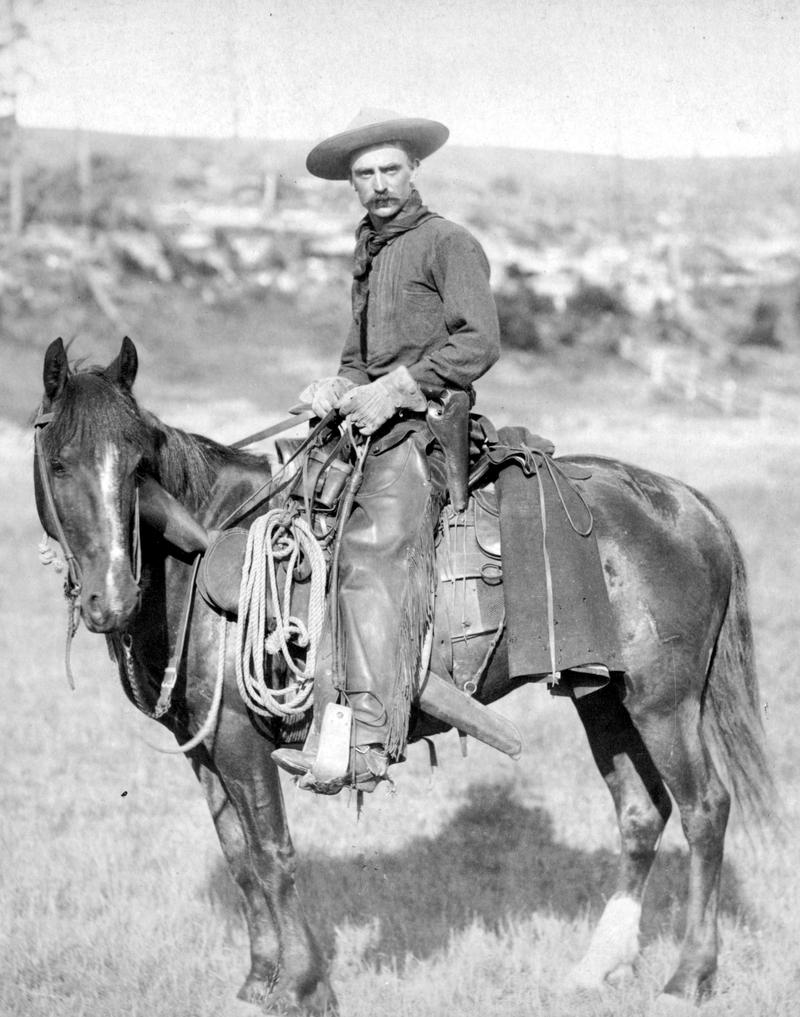
From the Office of Education study guide:
CLOSING FRONTIERS The harder the conflict, the more glorious the triumph.--THOMAS PAINE.
The story of the American frontier deals with one of the most thrilling phases of our history. It is the story of a daring breed of men who moved steadily westward in the face of many dangers and hardships. Ever since colonial times, the frontier had been slowly pushed westward over the Alleghanies, to the Ohio, to the Mississippi, and beyond. The Settlement of the West. By the 1860's, pioneers had settled in most parts of the country, although communities were still thin and straggling. To encourage further settlement, the Homestead Act was passed in 1862. This provided 160 acres of free land for anyone who would live on the land for five years and improve it. Thousands took advantage of the Act. By 1893, with the settlement of the Cherokee Outlet, a narrow strip of land sixty miles wide that lay between Kansas and Oklahoma, practically all the good land had been settled. Since 1868, it is estimated that between two hundred and two hundred fifty million acres of free land were settled in this way.
The Passing of the Frontier.
Railroads were built and great industrial and agricultural prosperity followed. To supply all the implements and tools required by the farmers, new factories were built in the East. The call for workers and more workers brought immigrants in large numbers from Europe. In the nineties, when there was no more good free land to settle, the immigrants settled in the great cities of the East. They went into the factories and into the mills. They dug the sewers and built the streets. They crowded into old sections of the cities, and conditions in the slums got much worse. Agricultural Troubles. Agricultural prosperity was brought to a sudden halt by the Panic of 1873 and, later, by the Panic of 1893. The great flow of farmers into the West and the use of more machinery and scientific farming methods had resulted in overproduction. Farmers faced high railroad rates, high-priced machinery, high-interest rates, and low prices for farm products. The discontent which followed resulted in the formation of the Populist Party. The Grange, an organization of farmers which had existed since 1867, fought high railroad rates and other railroad practices. Cooperatives were organized in Wisconsin as a part of this movement. The Populist Party became powerful during the Panic of the 1890's. It demanded cheaper money and the coinage of free silver. The Populists supported the policies of William Jennings Bryan, the Democratic candidate for President in 1896, but Bryan was defeated and the Populist Party lost its power.
The Rise of Labor.
As factories and mills were built and developed, more and more immigrants from south and southeastern Europe poured into the mills of New England and into the coal mines of Pennsylvania, Ohio, and West Virginia. The new immigrant was satisfied with a smaller wage for his labor than were the workers already employed in the mill and mine. The reason for this was the fact that he had been used to lower standards of living. Discontent arose, strikes became common, and immigrants were used as strikebreakers. This period saw the beginnings of organized labor when workers banded together for self protection and for better working conditions. However, in spite of the depressions of the seventies and nineties, the United States was already taking rapid strides toward becoming the world's leading agricultural and industrial nation.
WNYC archives id: 125530
